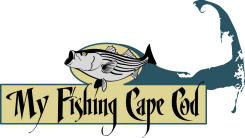Wooden lures have an incredible history in surf fishing - a history that is rich in both cow striped bass, and plug building nuances. From shape, to weight, to paint, there are nearly endless combinations to experiment with.
However, the type of wood a plug is carved from is one of the most overlooked aspects of plug building.
Wood selection affects how the plug moves in the water, as well as how deep it can dive. It's certainly a factor to consider when building your first plugs.
Hardwood, Softwood and Specific Gravity

You may hear various types of wood described as hardwood or softwood. This can be confusing, since it actually refers to the types of trees from which the wood is harvested, and gives no indication of the actual properties of the wood.
For example, balsa wood, which is known for being incredibly buoyant and soft, is technically classified as a hardwood.
For this reason, when selecting what type of wood I want for a new lure project, I pay more attention to the actual traits of the wood, such as that species' specific gravity.
Specific gravity is a measure of the density of a wood, relative to the density of water, and can give you a solid indication of how a wood will act when in the water.
When choosing which wood to use, the first question asked should be, "What do I want the lure to do?"
Topwater and Surface Swimmers

This striped bass fell to a "squid spook" built by the author. Basswood, pine, balsawood or cedar are good choices for spook-style lures.
Let's start with topwater lures. There are a number of different types of topwater lures, such as pencil poppers, polaris poppers, spooks, or surface swimmers, like a surfster. These are lures which are designed to generate commotion on the surface and entice fish to strike.
When building a plug whose purpose is to stay on the surface, you will want a wood with a lower specific gravity, such as basswood, pine, balsawood, or a cedar wood. These specific species of wood also tend to be easily influenced by any weights inserted into the wood.
This makes them ideal for topwater lures, due to the fact that topwater plugs often require lead weights to be inserted, creating their action, such as the heavy tail weight of a pencil popper, or the chin weight of a surfster.

A "Washed Ashore Fishing" Surfster, built and painted by the author.
These species of wood will also create a "faster" action, appearing to be more lively in the water, when used to build metal lip swimmers. With the right shape, weighting, and metal lip these species of wood can also be used to build many styles of subsurface swimmer.
Sub-Surface & Diving Lures

Hard maple and birch are the perfect choice for darters, needlefish and other sinking lures.
What if you want your lure to sink, or dive deep in the water column?
When this is the case, a buoyant wood hardly seems like an appropriate choice. This is where woods with a higher specific gravity come into play.
The most popular woods in this category are hard maple and birch. These woods are less lively in the water, and require less weight to be added to make them sink.
Many of the all-time great lure builders often chose these woods for their deep diving metal lip swimmers. For example, Donny Musso and Danny Pichney famously used maple wood to build their large, deep diving plugs.
Hard maple and birch are also the perfect choice for fast sinking needlefish.
These types of wood are also extremely popular for building darter lures, which characteristically have a slower, yet unpredictable, subsurface action.
Cedar: The Most Common Choice
Many plugs turned today, are made out of cedar, for several important reasons.
First, the lower specific gravity of cedar gives cedar lures a "livelier" action than other woods with higher specific gravities.
Second, cedar isn't prone to splitting, especially in comparison to its hardwood alternatives.

A "Washed Ashore Fishing" metal lip swimmer, created by the author.
In addition, cedar woods are naturally water and rot resistant.
While you will still need to seal a plug built with cedar, it can be a more forgiving process due to this natural resistance.
In conclusion, I hope this mini-tutorial has helped you decide which wood is right for your next plug project.
Please let me know what you think by commenting below!


Alaskan Yellow Cedar
AYC is used for a large spectrum of plugs. Most metal lips (Danny’s, Trollers, Pikies, Surfsters, etc.), pencils, poppers, spooks, floating/quasi-sinking needlefish, darters, bottles), etc. To generalize all plug shapes can be turned with AYC and tuned with a little love to do a variety of things, from dancing on the surface, to swimming 4-5’ down. The majority of wood plugs off the shelf at a tackle shop or from a builder are likely AYC. There’s good reason…because everyone uses it, and its has a good reputation. AYC exhibits rot resistance, a low specific gravity (bouyant), high density, consistent grain structure, seal’s well, and its ability to turn on a lathe well makes it nice to work with, the cost and dust ehh not so much. In my opinion, a plug that fishes well should get beat up and likely break off the line before I start worrying about the rot resistance. Though I still choose to turn AYC for many plugs, there are alternates that are only an experiment away from me switching over.
Pine
Pallet stock, or from Home Depot, tight pine grain is key. This can be a great wood to work with. In lieu of spending 5 bucks on 12” AYC blank, you can grab a 8’ 2x for the same cost, or grab a nice pallet from some warehouse for nothin. Pine is an alternative to AYC, the above list of plugs can be built with Pine and tuned from there to get a similar action.
Maple
Maple is another accessible species of wood. Certain darters, needlefish and metal lips (Donny’s, Trollers) are built with maple. Maple is a tough wood to seal due to its grain structure, however, there are ways around it. I have built darters from maple with no addition weights, which is common with maple. It casts well, turns well, accessible, and makes good firewood if you mess up.
Birch
When I think of birch plugs, I think of certain needlefish. I turned a few and it’s nice to work with, however, I focus on other alternatives.
Conclusion
You can build a plug to swim a certain way, 5 different ways, all that matters is you have confidence in the plug design. I can’t say an AYC and a Pine Danny will swim exactly the same. I will say it’s kinda like ground turkey instead of ground beef in a taco, I don’t think it’ll turn the fish off. A good tip, hydrobalance your wood to find its natural orientation in water then tune your plug from there. Wood species, part of the tree (sapwood, heartwood), adding weight, moving hooks, hook hanger hole size, size of hooks, split ring/cut hooks, other hardware, thru hole location, playing with the body shape (slopes, widths, lengths), lips, etc. plays a role in making a plug dance the right way, your way. Try it all.
Great comment Marshall, thank you! I appreciate you reading the article and providing this extra information. Awesome stuff!
Despite some of the best swimmers ever made being made from maple it’s not the best choice. Black locust is probably the best and I’d guess Mr. Musso et al didn’t know about it or know where to find it.
Dale Anderson (woodworker 45 years)
Awesome, thank you for sharing that tip Dale!
“My boy is wicked Smaht!” Can’t wait to get a few of your plugs in the water next season!
Extremely interesting article.
Tad
Very interesting – nice to know which types of wood are best for durability, fishing on the surface and diving lures.
Good information. I’d like to try my hand at building a plug. What resources would be best for a first time project?
Hi Richard,
Thank you for the kind words! That’s a great question, and unfortunately I don’t really think I’ve seen too many resources specific to guys just getting started. There are a good number of how-to’s floating around on various forums, websites, and youtube that a quick google search will dig up, but most that I’ve seen really just walk you through how guys are building baits using a shop full of expensive tools. While these guides and resources are full of quality information, I don’t think they really provide solid footing for someone who might not necessarily have those tools already. In reality, all you really need is a drill, a saw, and some sandpaper to get started. I’ve been meaning to put together something like this, maybe a weekly step-by-step or “build along” type process?